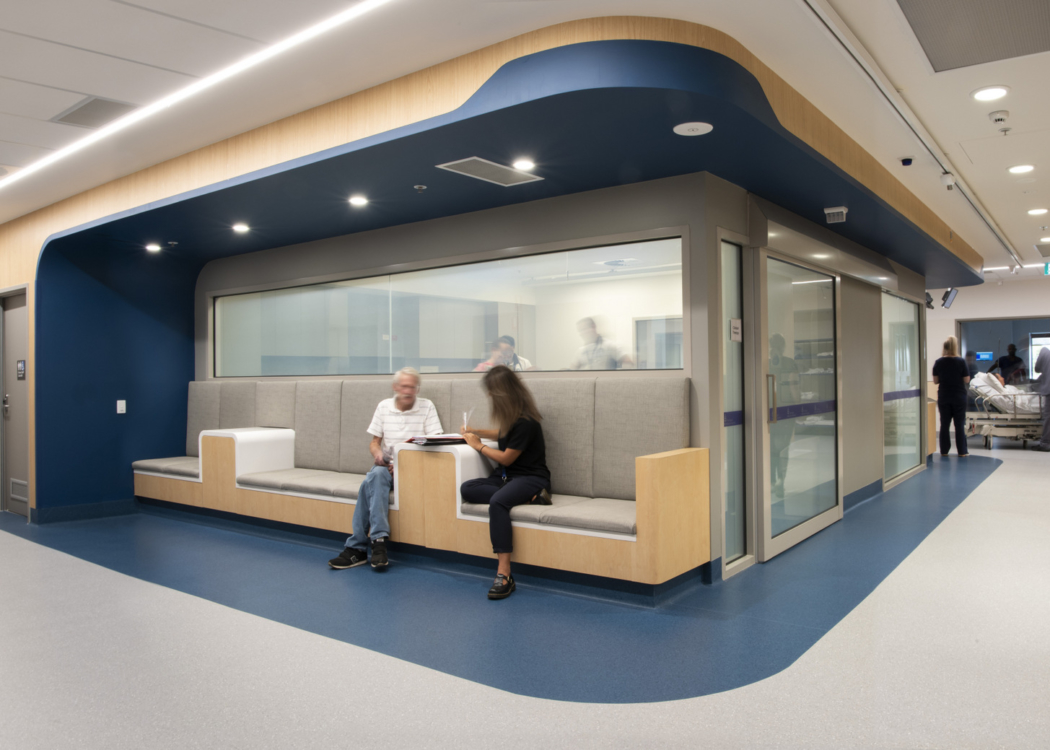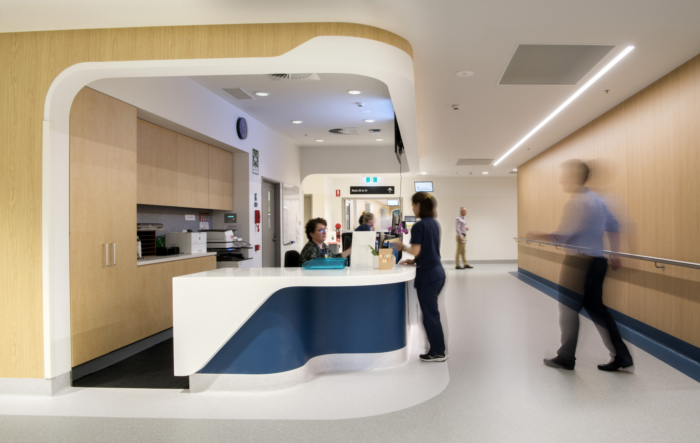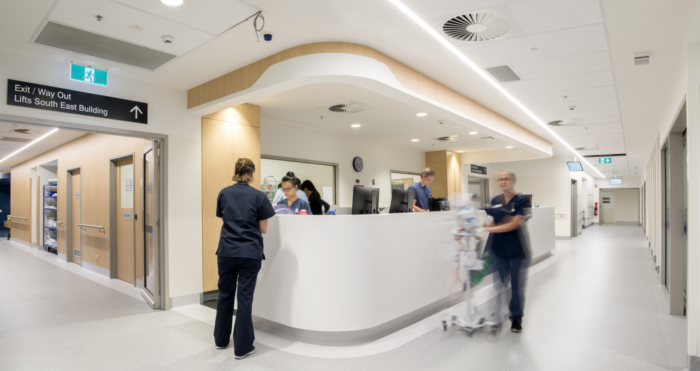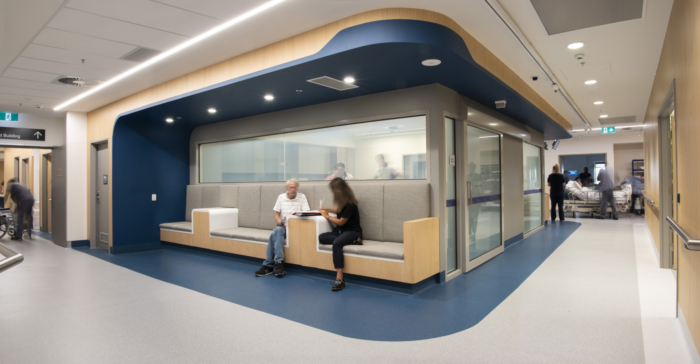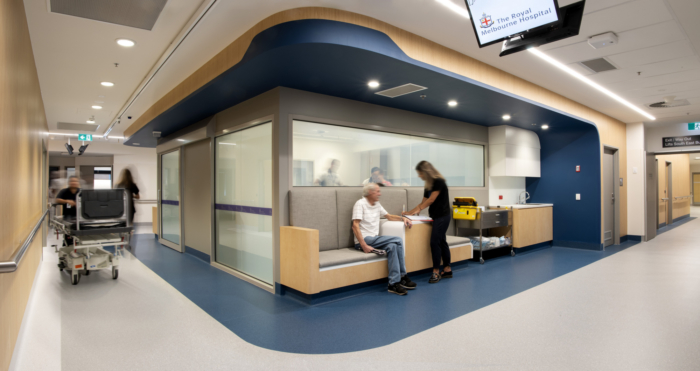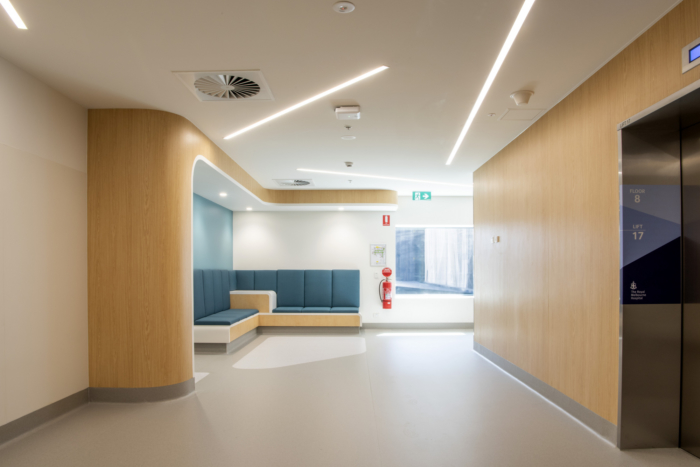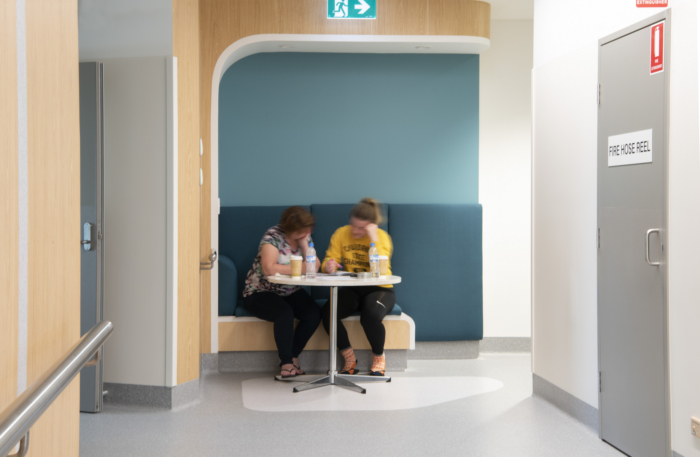Royal Melbourne Hospital – Stroke Care Unit
ClarkeHopkinsClarke designed the new Stroke Care Unit at Royal Melbourne Hospital in Melbourne, Australia.
Stroke is one of Australia’s major causes of death and disability, but an exciting new treatment called Endovascular Clot Retrieval (ECR) is having a major impact on patient outcomes. Royal Melbourne Hospital is Victoria’s only provider of ECR, a time-critical, technically challenging, high-intervention rehabilitation treatment that starts within 24 hours of clot removal. Getting short term, high-needs patients up and active early is crucial. The latest research shows the greatest benefits of ECR are achieved when blood flow is restored early.
ClarkeHopkinsClarke Architects has quite literally designed Royal Melbourne Hospital’s new Stroke and Neurology Unit around this high-impact new approach. Project Architect Nicholas Simmonds says the bespoke facility uses biophilic and patient-centered design principles including abundant natural light, soft curved forms, timber joinery and rug-like floor features, serene blue and warm grey seating upholstery and feature walls, and cosy nooks where staff, patients and visitors can interact and clinicians can observe incidental rehab activities or write up clinical notes.The effect is a calming, informal interior with elements of home, which naturally supports brain stimulation, physical activity and social connectivity.
Patient rooms are located around the outside of the unit to capture natural light – a natural brain stimulant that aids recovery. Previously decentralised rehabilitation services and new clinical and caregiver support facilities are accomodated in a central hub. Rooms and rehab are linked by a wide circular walkway dubbed ‘The Racetrack’. This light-filled, sociable space is lined with deliberately unclinical upholstered timber joinery seating. Staff, patients and vistors have embraced The Racetrack for all kinds of interactions and incidental rehabilitation: short walks, frequent rests, family visits, impromtu meetings – even companionable sessions where patients sit together working on brain stimulating puzzles. ClarkeHopkinsClarke Heath Partner Justin Littlefield says The Racetrack gives staff clear sightlines and suble wall- and floor-markers to help unobtrusively monitor patients’ progress.
ECR requires high patient-staff ratios akin to intensive care. The new unit decentralises clinical staff, locating a small staff workbench outside a pair of patient rooms to enable constant oversight and frequent interaction. Operable glazed walls and windows in High-Dependency Unit bedrooms can be switched from clear to opaque when privacy is required. The design improves links to other departments, introduces teaching, training and research facilities that support patient care and staff development, and includes a higher proportion of single-bed patient rooms.
Staff satisfaction has also increased with the new design. More appealing, less clinical-looking spaces in which to walk, meet and rest are motivating patients to stay active throughout their stay. Centralized rehabilitation services means valuable recovery time is no longer lost as staff shuttle patients to other departments.
Ward Clerk Mavi Whitton concedes staff do more walking on the new ward but says they recognize the health benefits of that and appreciate the clear sight-lines, natural light and touches of home like lovely timber joinery.
Architect: ClarkeHopkinsClarke
Photography: courtesy of ClarkeHopkinsClarke

